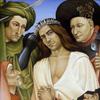'Jane Peterson: Rhythmic Arrangements' opens at Vose Galleries
- BOSTON, Massachusetts
- /
- May 20, 2017
Vose Galleries' exhibition Rhythmic Arrangements features over a dozen works by the adventurous and independent Jane Peterson (1876-1965). Peterson pursued her chosen profession with zeal to become one of the most respected painters of her generation. From humble Midwest roots, personal ambition, mixed with an extraordinary talent and bit of good luck, carried her to the center of New York art circles, to the enchanting capitals of Europe and North Africa, and finally to the walls of prestigious museums throughout the country. The core group of paintings in this show has resided in a single private collection for the past 50 years and features depictions of the artist's favorite stomping grounds, including views of Gloucester, Massachusetts, as well as scenes from her travels to Italy, France and Turkey. Also included are examples of garden and still life works, which were Peterson's favorite subject matters, especially in the latter half of her career. Rhythmic Arrangements will be viewable online and in the gallery through July 1st, 2017.
Born and raised in Illinois, Peterson’s inherent talents materialized in a time when the assumed roles for young women were usually limited to the household. In 1895, she left for New York with a $300 loan from her mother and enrolled at the Pratt Institute in Brooklyn, where Arthur Wesley Dow directed the Life and Design classes. Dow’s philosophy stressed the use of line, form and color to compose one’s paintings and planted the first seeds in Peterson’s mind to think outside the box as she gradually developed her unique style. Upon graduation in 1901, Peterson took a position in Brooklyn as Drawing Supervisor of Public Schools and continued her own education through classes with Frank DuMond and Henry B. Snell at the Art Students League, where she would later teach watercolor. She held several more teaching positions in Elmira, New York, Boston and Baltimore, allowing her to repay her $300 loan and save enough money to travel.
In 1907, Peterson embarked on a study-tour of the Continent with Snell and his wife, visiting artists’ enclaves along the Cornish coast, in Holland, and in Italy at Lake Como and Venice. When the Snells returned to America, Peterson continued her studies under noted British artist Frank Brangwyn in London before moving on to Paris and the studio of portrait painter Jacques-Émile Blanche. Peterson exhibited at the Société des Artistes Français, and in solo shows at Boston’s St. Botolph Club in January 1909, and at the Art Institute of Chicago in December 1910. In the summer of 1909, Peterson traveled to Madrid to study with Spanish Master Joaquín Sorolla y Bastida, whose influence would make the largest impact on her mature painting style. Working alongside Sorolla from dawn to dusk, Peterson’s palette brightened, her brushwork grew more spontaneous and gestural, and she finally achieved the dynamic technique she had been searching for. With confidence in her skills, the intrepid Peterson journeyed to North Africa, having no reservations about exploring unfamiliar places on her own. She painted among the bazaars and in the countryside regardless of the risks posed to an American woman traveling alone: “Isn’t it strange – here I am alone, going to the most fanatical town in Turkey, can’t speak a word of the language, on a cheap boat to an unknown port, and I am not the least bit afraid!”
Peterson joined a number of watercolor clubs, exhibited at the National Academy of Design, the Pennsylvania Academy of the Fine Arts and the Corcoran Gallery in Washington, D.C., and had a second show at the Art Institute of Chicago in 1914. As a testament to her standing in the art world, the Chicago exhibit comprised seven concurrent one-man shows, with Peterson’s radiant landscapes hanging near examples by her prominent male colleagues, including George Bellows, Robert Vonnoh and Charles H. Woodbury. Peterson also aligned herself with the important women’s associations of the day, including the National Association of Women Painters and Sculptors and ‘The Group,’ a circle of six established women artists who exhibited nationally between 1917 and 1919. These organizations offered fellowship and vital exhibition space during a transformative period in American history, as women aided both in the war effort and in the struggle for women’s suffrage. In January 1925, she exhibited 55 paintings at Vose Galleries from February 24th - March 7th. We are pleased to again present the bold works of the adventurous and independent Jane Peterson, whose style, while often described as a blend of Impressionism, Post-Impressionism, Expressionism, and Fauvism, truly defies classification. To view the exhibition online please visit: http://www.vosegalleries.com/exhibitions/jane-peterson-rhythmic-arrangements
238 Newbury Street
Boston, Massachusetts
info@vosegalleries.com
617-536-6176
http://www.vosegalleries.com



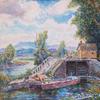

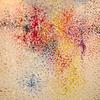

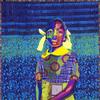
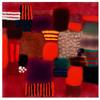
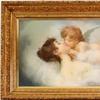
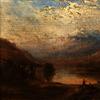


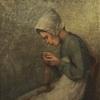
100x100_c.jpg)
